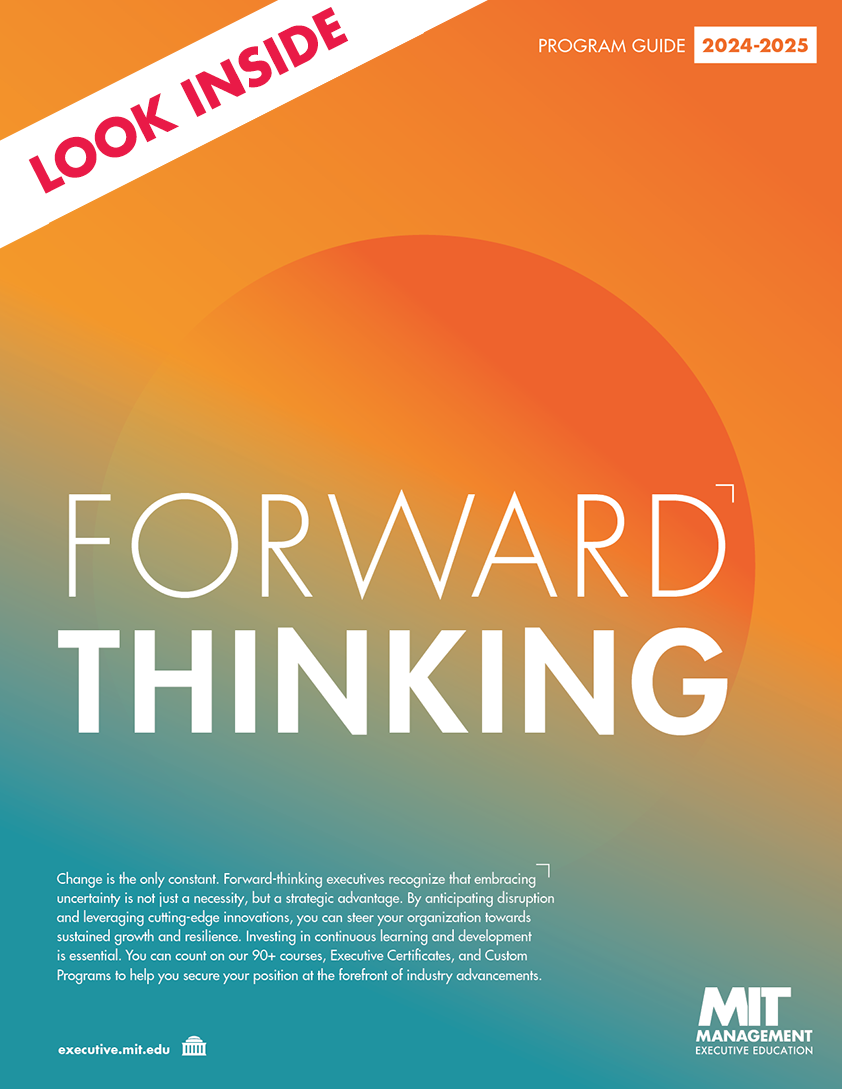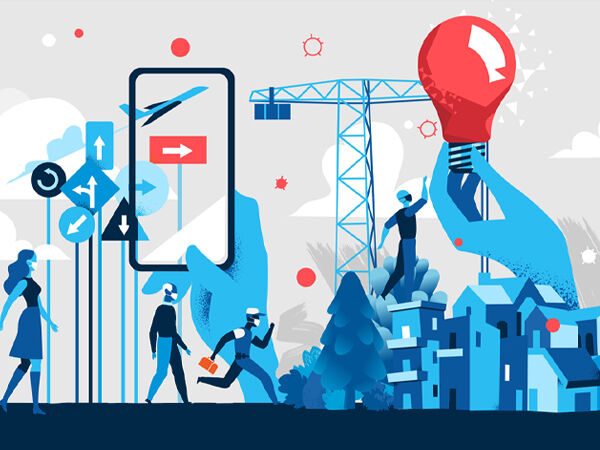The world of work has changed significantly, as have the needs of the modern workforce. Today, employees and business leaders face unprecedented challenges in the workplace, with a labor market that’s affected by factors such as globalization, automation, artificial intelligence (AI), growing wealth inequality, and climate change. Added to that, the COVID-19 pandemic has drastically impacted the new career landscape. As it continues to influence crucial work trends, leaders need to rethink workforce and employee planning, management, performance, and experience strategies. (1)
Now, more than ever, professionals are reevaluating what’s most important in their jobs. The disruption caused by the pandemic has revealed that careers needn’t be one-directional; professionals are opting for a more fluid path. (2)
“The future of work is in hot debate all over the world. The World Economic Forum, the ILO, the International Confederation of Trade Unions, consulting firms, and universities like MIT have task forces asking what work will look like in the years ahead,” says Thomas Kochan, Faculty Director in the Leading the Future of Work online short course from the MIT Sloan School of Management. “There are two problems with many of these debates. The first is an over-fixation with technology. The second is the view that technology has a trajectory all its own as if there is some iron law of physics that will determine its shape and effects. I challenge both of these premises: technology will of course be important; it is one of the big ‘megatrends’ that will influence work of the future. But how it will influence the future depends on the actions we take now.” (3)
Challenges in the workplace
The COVID-19 pandemic has accelerated existing trends in remote work, e-commerce, and automation; navigating its aftermath will arguably be one of the biggest obstacles of our time. To keep operations going while minimizing the risk to employees, many companies have adapted new ways of working. Amid mounting economic turmoil, executives are increasingly guarded in their outlook — only one in five chief financial officers surveyed by PwC said they believed their companies could resume ‘business as usual’ if the crisis ended today. (4) According to a similar study of global CEOs, shifts towards remote working, automation, and low-density offices are here to stay. (5)
The COVID-19 pandemic has impacted workforce management in two major ways that create both challenges and opportunities:
![]()
Learn to lead digital transformation
“One of the greatest challenges and opportunities of our time lies in harnessing the innovative potential of emerging technologies to help achieve a more prosperous and just society.” — Thomas Kochan, Faculty Director (AI Magazine, 2021)
Along with the transforming labor market, rapid advancements in technology continue to modify the way people work. For example, AI and machine learning are streamlining operations, while automation and robotics are enhancing output and productivity. As a result, a new workforce is emerging, enabling organizations to easily scale and hire for new, in-demand skills. (6)
However, while these factors are driving the future of work, they are also presenting notable challenges: businesses are trying to figure out how these technologies will impact their workforce long term. Attracting and retaining talent, reimagining what we know of the workplace, and adapting to a changing business landscape are among the top concerns. (7)
Artificial intelligence and the future of work
AI is one of the most important technologies in the world today. How this technology will affect work in the future, however, is still up for debate. According to an MIT report, ‘Artificial Intelligence and the Future of Work‘, attention is given to the potential of AI and its limitations. As per the report:
“Recent fears about AI leading to mass unemployment are unlikely to be realized. Instead, we believe that — like all previous labor-saving technologies — AI will enable new industries to emerge, creating more new jobs than are lost to the technology.”
Years of research tell us the best returns to technology are achieved when it is integrated with redesign of work practices, not by designing technology first and treating workforce issues as something to address later in the implementation process. Yet this lesson is often ignored, only to repeat the disastrous results of over automating. (8)
"One of the greatest challenges and opportunities of our time lies in harnessing the innovative potential of emerging technologies to help achieve a more prosperous and just society."

Although the robust potential of AI is yet to be fully understood, it’s likely to have notable economic importance in the interim by steadily increasing the number of tasks that computers can do faster and more cheaply, freeing up capacity for uniquely human skills. As AI, increased automation, and robotics take control of more repetitive tasks, an entirely new category of jobs is emerging. (9) The result will likely be more creative human-centered roles, requiring higher degrees of social and emotional intelligence, as well as negotiation skills. Despite prevailing fears of redundancy, humans are very much at the heart of the future of work.
Partner with your workforce
Until recently, the assumption that physical workspaces are needed for productivity and collaboration has dictated the nature of work. Impacted on a global scale by COVID-19, this notion is no longer true, as companies were forced to adapt and become more agile. (10) According to McKinsey, productivity data on remote teams has exceeded expectations altogether: 80 percent of people enjoy working from home, while 41 percent feel more productive than before. (11)
In the Leading the Future of Work course, approaches to successfully integrate technology and prepare the workforce for the future are explored. These include:
- The importance of working with teams and employees to design and manage flexible-hybrid work arrangements
- Ways to empower teams to work together and achieve organizational goals, and meet employee needs and aspirations for flexibility
- Monitoring of equity issues to ensure the lowest-level employees have the same opportunities to work in flexible ways as higher-level employees
Working together in these new ways can create and shape a more productive, innovative, and equitable future of work for all.
Reimagine leadership for the future of work
Rob Kaiser, president at Kaiser Leadership Solutions, says two major challenges characterize leadership today: one is the need to juggle a series of paradoxical expectations — do more with less; cut costs but innovate; think globally, act locally. The second is the “unprecedented pace of ‘disruptive change’, which speeds up the interaction of these demands and simultaneously increases the pressure on organizations to adapt”. These obstacles have brought to light the need for versatile, agile leaders who have the ability to adapt to a variety of changes, and the resourcefulness to meet organizational priorities.
As the world continues to face challenges, changes, and disruptions, leaders need to build and maintain a sustainable skill set that ensures they are prepared for a changing workplace. Those who learn to evolve, adapt, and drive change will be the ones leading the future of work. ”The bottom line is if we go beyond predicting or worrying about these megatrends and start focusing on strategies to address and manage them, we can shape a positive and rewarding future for work,” concludes Kochan. “The future of work, indeed, the future of our planet is in our hands.”
The MIT Sloan Leading the Future of Work online short course explores the various elements driving transformation and shaping the future of business design. The course provides a deeper understanding of how the evolving workplace affects businesses and individuals, as well as the role technology and automation play in influencing and speeding up organizational change. In this six-week program, you’ll address the misconceptions about the increasing impact of technology advancements and learn to see automation as a valuable tool developed to achieve objectives rather than replace jobs.
References:
1 Baker, M. (Jun, 2020). ‘9 Future of work trends post-COVID-19’. Retrieved from Gartner.
2 (Nd). ‘The great career reset’. Retrieved from GetSmarter. Accessed July 2, 2021.
3 Kochan, T. (Jan, 2019). ‘It is not technology that will steal your job’. Retrieved from Irish Times.
4 Moats, M. C. and DeNicola, P. (Nd). Returning to the workplace after COVID-19: What boards should be thinking about’. Retrieved from PwC. Accessed 1 Jul, 2021
5 (Aug, 2020). ‘CEOs: Post-Covid changes are permanent and there are more to come’. Retrieved from PwC.
6 (Oct, 2020). ‘Reconciling cultural and digital transformation to design the future of work’. Retrieved from Harvard Business Review.
7 (Oct, 2020). ‘Reconciling cultural and digital transformation to design the future of work’. Retrieved from Harvard Business Review.
8 Kochan, T. (Jan, 2019). ‘It is not technology that will steal your job’. Retrieved from Irish Times.
9 McGinnis, D. (Oct, 2020). ‘What is the Fourth Industrial Revolution?’. Retrieved from Salesforce.
10 Dhaliwal, G. (Oct, 2020). ‘How the pandemic is changing the future of work’. Retrieved from Forbes.
11 Boland, B. et al. (Jun, 2020). ‘Reimagining the office and work life after COVID-19’. Retrieved from McKinsey.








